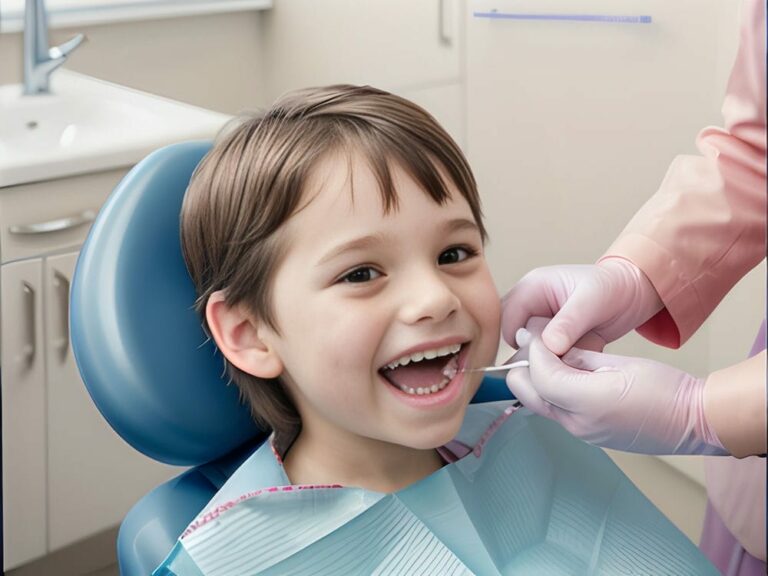Environmental Sustainability in Dentistry: Understanding the Importance of Eco-friendly Dental Practices
Environmental sustainability in dentistry is becoming increasingly important in today’s world. As the dental industry continues to grow, so does its impact on the environment. It is crucial for dental professionals to understand the importance of implementing eco-friendly practices and making sustainable choices in their day-to-day operations.
One key aspect of environmental sustainability in dentistry is energy efficiency. Dental practices consume a significant amount of energy through their daily operations, including the use of dental equipment, lighting, and heating or cooling systems. By adopting energy-efficient technologies and practices, such as using LED lights and investing in energy-efficient dental equipment, dental professionals can reduce their carbon footprint and contribute to a more sustainable future.
Another important consideration for environmental sustainability in dentistry is water conservation. Dental procedures require a substantial amount of water for tasks such as rinsing instruments and providing patient care. Implementing water-saving techniques, such as using low-flow faucets and installing water-efficient dental units (WEDUs), can significantly reduce water consumption. Additionally, recycling wastewater through proper filtration systems can help minimize environmental impact.
Renewable energy sources are also vital for achieving environmental sustainability in dentistry. Transitioning to renewable sources like solar or wind power can greatly reduce greenhouse gas emissions associated with traditional energy generation methods. By investing in renewable energy solutions, dental practices can not only reduce their carbon footprint but also contribute to a cleaner and greener environment for future generations.
Incorporating eco-friendly practices into dentistry is essential for minimizing its environmental impact. Energy efficiency, water conservation, and renewable energy sources are just some of the key areas where dental professionals can make a difference. By understanding the importance of these practices and implementing them into their daily operations, dental professionals can play an active role in creating a sustainable future for both oral health care and the environment.
The Environmental Impact of Dentistry: Exploring the Challenges and Solutions
The environmental impact of dentistry is a growing concern that needs to be addressed. Dental practices contribute to carbon emissions and pollution through their energy consumption, water usage, and waste generation. It is crucial for dental professionals to understand the challenges associated with these issues and implement effective solutions.
One of the main challenges in reducing the environmental impact of dentistry is minimizing the carbon footprint. Dental practices consume large amounts of energy, particularly through the use of equipment and lighting. By adopting energy-efficient technologies and practices, such as utilizing LED lights and investing in energy-efficient equipment, dental professionals can significantly reduce their carbon emissions.
Another challenge is pollution prevention, specifically regarding water usage. Dental procedures require a significant amount of water for various tasks. Implementing water-saving techniques, like using low-flow faucets and installing water-efficient dental units (WEDUs), can help minimize water consumption. Additionally, recycling wastewater through proper filtration systems can prevent pollution and conserve natural resources.
Recycling is another crucial aspect of environmental sustainability in dentistry. Dental practices generate various types of waste, including plastic packaging, used gloves, masks, and other disposable items. Implementing recycling programs within dental offices can help divert these materials from landfills and promote a circular economy.
In addressing these challenges, dental professionals need to prioritize sustainability by implementing energy-efficient technologies, conserving water through efficient practices, and establishing recycling programs within their offices. By taking these steps towards environmental sustainability in dentistry, we can ensure a cleaner future for both oral health care and the planet as a whole.
Sustainable Materials in Dentistry: Choosing the Right Options for a Greener Practice
Sustainable materials play a crucial role in reducing the environmental impact of dentistry. By choosing the right options, dental professionals can minimize waste generation and promote a more eco-friendly practice. One solution is to opt for composting, which involves converting organic waste into nutrient-rich soil through natural decomposition processes.
Composting can be implemented in dental offices by separating organic waste such as food scraps, coffee grounds, and plant-based materials from other types of waste. These organic materials can then be composted either on-site or through partnerships with local composting facilities. By diverting these materials from landfills, dental practices can contribute to reducing greenhouse gas emissions and promote a more sustainable waste management system.
Another important consideration is the use of biodegradable products in dental practices. Biodegradable products are designed to break down naturally over time, minimizing their impact on the environment. Dental professionals can choose biodegradable alternatives for various items like disposable cups, utensils, and even packaging materials. By making this switch, dental practices can reduce their reliance on single-use plastics and contribute to a healthier planet.
Furthermore, hazardous waste disposal is an essential aspect of environmental sustainability in dentistry. Dental practices generate hazardous waste such as amalgam from fillings and certain chemicals used in procedures. It is crucial for dental professionals to follow proper protocols for disposing of hazardous waste to prevent contamination of water sources and ecosystems. Implementing effective hazardous waste management systems ensures that these materials are properly handled and disposed of in accordance with local regulations.
By incorporating composting techniques, using biodegradable products, and implementing proper hazardous waste disposal measures, dental professionals can make significant strides towards creating greener practices. These efforts not only benefit the environment but also contribute to a healthier future for patients and communities as a whole.
Waste Management in Dentistry: Strategies for Minimizing Environmental Footprint
Conservation and sustainable development are crucial aspects of addressing the challenges of climate change in dentistry. Waste management plays a significant role in minimizing the environmental footprint of dental practices. By implementing effective strategies, dental professionals can contribute to a more sustainable future.
One strategy for waste management is recycling. Dental offices can establish recycling programs to separate recyclable materials like paper, plastic, and glass from general waste. This not only reduces the amount of waste sent to landfills but also conserves valuable resources by repurposing materials for future use. Additionally, dental professionals can incorporate energy-efficient practices by using energy-saving equipment and implementing proper insulation measures.
Another important aspect of waste management is reducing the use of hazardous materials. Dental practices can explore alternative materials and techniques that minimize or eliminate the need for toxic substances. For example, digital imaging technology eliminates the need for traditional X-rays, which require hazardous developing chemicals. By prioritizing these alternatives, dental professionals can protect both their patients’ health and the environment.
In addition to recycling and reducing hazardous materials, dental practices can implement proper waste disposal procedures. This includes following local regulations for handling and disposing of hazardous waste, such as amalgam from fillings or expired medications. Proper disposal prevents these substances from contaminating water sources and ecosystems.
By prioritizing waste management strategies such as recycling, reducing hazardous materials, and implementing proper disposal procedures, dental professionals can make significant contributions to environmental sustainability in dentistry. These efforts not only address the challenges posed by climate change but also promote sustainable development in oral healthcare practices.
Energy Conservation in Dental Offices: Practical Tips for a Sustainable Future
Environmental sustainability is a pressing issue in dentistry, and dental offices must prioritize eco-conscious practices to minimize their environmental footprint. One crucial aspect of this is energy conservation. By implementing practical strategies, dental professionals can contribute to a more sustainable future.
To start, dental offices should focus on optimizing energy use by utilizing energy-saving equipment and implementing proper insulation measures. This can include using energy-efficient lighting, HVAC systems, and appliances. By making these simple changes, dental practices can significantly reduce their energy consumption and lower their carbon emissions.
Furthermore, it is essential for dental professionals to stay informed about environmental regulations related to energy use. By adhering to these regulations, dental offices ensure that they are operating in an environmentally responsible manner. This includes properly disposing of hazardous materials and following guidelines for minimizing pollution.
Incorporating sustainable practices into the daily operations of a dental office not only benefits the environment but also presents an opportunity for cost savings. By reducing energy consumption, dental practices can lower their utility bills and improve their overall financial sustainability.
By prioritizing energy conservation and staying up-to-date with environmental regulations, dental professionals can play a vital role in promoting sustainable development in oral healthcare practices. Implementing these practical strategies will not only help address the challenges posed by climate change but also create a more environmentally conscious industry for the future.
Water Conservation in Dentistry: Best Practices for Responsible Water Usage
Water conservation is another critical aspect of environmental responsibility in dentistry. Dental offices consume a significant amount of water daily, whether it’s for patient care or office maintenance. Therefore, implementing best practices for responsible water usage is essential to minimize waste and conserve this precious resource.
One effective strategy is to invest in water-efficient dental equipment. By using devices that reduce water consumption without compromising patient care, dental offices can significantly decrease their water usage. Additionally, implementing proper maintenance protocols can help identify and fix any leaks or inefficiencies in the water supply system promptly.
Furthermore, promoting environmental awareness among staff members and patients can also contribute to responsible water usage. Educating employees on the importance of conserving water and providing them with simple tips, such as turning off faucets when not in use or using low-flow fixtures, can make a significant difference. Similarly, informing patients about the dental office’s commitment to sustainability and encouraging them to adopt water-saving habits at home can create a ripple effect of positive change.
By prioritizing water conservation alongside energy conservation, dental professionals demonstrate their commitment to environmental sustainability. Implementing these best practices not only helps protect our planet’s vital resources but also promotes a culture of eco-consciousness within the dental industry.
Through efforts like utilizing alternative energy sources and practicing responsible resource management, dental offices have the power to lead the way towards a more sustainable future. By embracing environmental responsibility and raising awareness about it, dental professionals can inspire positive change both within their practices and throughout their communities. Let us strive together for an eco-friendly oral healthcare industry that prioritizes the well-being of both patients and our planet.
Green Dentistry Certification: Navigating the Process to Achieve Sustainability Goals
Green Dentistry Certification: Navigating the Process to Achieve Sustainability Goals
As the importance of environmental sustainability continues to grow, many dental professionals are seeking ways to demonstrate their commitment to ethical dentistry. One effective way to showcase a dental office’s dedication to sustainability is through obtaining a Green Dentistry Certification. This certification recognizes dental practices that have implemented environmentally friendly practices and have taken significant steps towards reducing their ecological footprint.
The process of achieving Green Dentistry Certification involves several steps. First, an assessment is conducted to evaluate the dental office’s current sustainability practices, such as energy and water conservation, waste management, and use of eco-friendly materials. The assessment also considers other factors like patient education and community outreach programs related to environmental responsibility.
After the assessment, the dental office receives recommendations on areas where improvements can be made to meet the certification criteria. These recommendations may include implementing more sustainable practices in daily operations, such as using digital records instead of paper charts or incorporating recycling programs for materials like amalgam waste or packaging materials.
Once the recommended changes are implemented, a final evaluation is conducted by an authorized certifying body. If the dental office meets all the necessary requirements, they are awarded the Green Dentistry Certification. This certification not only serves as a badge of honor but also distinguishes the practice as an eco-conscious healthcare provider committed to ethical dentistry.
By pursuing Green Dentistry Certification, dental professionals can align their practice with sustainable values and make a positive impact on both their patients’ oral health and the environment. This certification acts as a roadmap for achieving sustainability goals while providing guidance on best practices for responsible resource management within a dental setting.
In this era of increasing awareness about environmental issues, obtaining Green Dentistry Certification demonstrates leadership in ethical dentistry and sets an example for others in the industry. By embracing sustainable practices and actively working towards reducing their ecological footprint, dental professionals can contribute significantly towards creating a greener future for oral healthcare.
Patient Education on Sustainable Dentistry: Promoting Awareness and Participation
As the importance of environmental sustainability continues to grow, many dental professionals are seeking ways to demonstrate their commitment to ethical dentistry. One effective way to showcase a dental office’s dedication to sustainability is through obtaining a Green Dentistry Certification. This certification recognizes dental practices that have implemented environmentally friendly practices and have taken significant steps towards reducing their ecological footprint.
To achieve Green Dentistry Certification, dental offices must undergo an assessment of their current sustainability practices. This evaluation considers factors such as energy and water conservation, waste management, and the use of eco-friendly materials. It also takes into account patient education and community outreach programs related to environmental responsibility. Based on this assessment, recommendations are provided on areas where improvements can be made.
After implementing the recommended changes, a final evaluation is conducted by an authorized certifying body. If all the necessary requirements are met, the dental office is awarded the Green Dentistry Certification. This certification not only serves as a badge of honor but also distinguishes the practice as an eco-conscious healthcare provider committed to ethical dentistry.
By pursuing Green Dentistry Certification, dental professionals can align their practice with sustainable values and make a positive impact on both their patients’ oral health and the environment. This certification acts as a roadmap for achieving sustainability goals while providing guidance on best practices for responsible resource management within a dental setting.
In this era of increasing awareness about environmental issues, obtaining Green Dentistry Certification demonstrates leadership in ethical dentistry and sets an example for others in the industry. By embracing sustainable practices and actively working towards reducing their ecological footprint, dental professionals can contribute significantly towards creating a greener future for oral healthcare.
Collaborating with Suppliers: Building Partnerships for Sustainable Product Procurement
As dental professionals strive to make their practices more environmentally sustainable, one crucial aspect to consider is the procurement of sustainable dental products. Collaborating with suppliers who prioritize sustainability can help dental offices reduce their ecological footprint and promote ethical dentistry.
When seeking sustainable product procurement, it is essential to establish partnerships with suppliers who share the same values and commitment to environmental responsibility. Look for suppliers that offer eco-friendly alternatives for commonly used dental materials, such as biodegradable or recyclable packaging, mercury-free amalgam alternatives, and low-waste disposables. These suppliers should also prioritize responsible sourcing and manufacturing processes that minimize environmental impact.
By building strong relationships with these suppliers, dental professionals can ensure a consistent supply of sustainable products while also supporting companies that align with their sustainability goals. This collaboration allows for open communication about specific product requirements and encourages suppliers to continue innovating in the field of sustainable dentistry.
Furthermore, partnering with like-minded suppliers can also provide opportunities for joint initiatives and educational programs. By working together, dental offices and suppliers can create workshops or webinars focused on promoting sustainable dentistry practices among both practitioners and patients. These collaborative efforts help raise awareness about the importance of environmental sustainability in oral healthcare and foster a sense of community around ethical dentistry.
In summary, collaborating with suppliers who prioritize sustainability is a crucial step in achieving environmental sustainability in dentistry. By establishing partnerships with these suppliers, dental professionals can ensure access to a wide range of sustainable products while actively supporting companies that share their commitment to ethical dentistry. Additionally, these collaborations provide opportunities for joint initiatives and educational programs that promote awareness and participation in sustainable practices within the dental community.
Continuous Improvement in Sustainable Dentistry: Implementing and Monitoring Long-term Environmental Initiatives
Collaborating with suppliers who prioritize sustainability is a crucial step in achieving environmental sustainability in dentistry. By establishing partnerships with these suppliers, dental professionals can ensure access to a wide range of sustainable products while actively supporting companies that share their commitment to ethical dentistry.
When seeking sustainable product procurement, it is essential to establish partnerships with suppliers who share the same values and commitment to environmental responsibility. Look for suppliers that offer eco-friendly alternatives for commonly used dental materials, such as biodegradable or recyclable packaging, mercury-free amalgam alternatives, and low-waste disposables. These suppliers should also prioritize responsible sourcing and manufacturing processes that minimize environmental impact.
By building strong relationships with these suppliers, dental professionals can ensure a consistent supply of sustainable products while also supporting companies that align with their sustainability goals. This collaboration allows for open communication about specific product requirements and encourages suppliers to continue innovating in the field of sustainable dentistry.
Furthermore, partnering with like-minded suppliers can also provide opportunities for joint initiatives and educational programs. By working together, dental offices and suppliers can create workshops or webinars focused on promoting sustainable dentistry practices among both practitioners and patients. These collaborative efforts help raise awareness about the importance of environmental sustainability in oral healthcare and foster a sense of community around ethical dentistry.
In summary, collaborating with suppliers who prioritize sustainability is a crucial step in achieving environmental sustainability in dentistry. By establishing partnerships with these suppliers, dental professionals can ensure access to a wide range of sustainable products while actively supporting companies that share their commitment to ethical dentistry. Additionally, these collaborations provide opportunities for joint initiatives and educational programs that promote awareness and participation in sustainable practices within the dental community.
FAQs
Q: What is the importance of environmental sustainability in dentistry?,
A: Environmental sustainability in dentistry is important because it helps reduce the negative impact of dental practices on the environment.,
Q: What are some of the challenges faced in achieving environmental sustainability in dentistry?,
A: Some challenges faced in achieving environmental sustainability in dentistry include waste management, energy consumption, and the use of hazardous materials.,
Q: How can dentists reduce waste in their practices?,
A: Dentists can reduce waste in their practices by implementing proper recycling programs, using digital imaging instead of traditional X-rays, and minimizing the use of disposable materials.,
Q: What are some energy-saving practices that can be implemented in dental offices?,
A: Energy-saving practices that can be implemented in dental offices include using energy-efficient appliances, properly insulating the office space, and using natural lighting whenever possible.,
Q: What are some hazardous materials commonly used in dentistry?,
A: Some hazardous materials commonly used in dentistry include mercury-containing dental amalgam, lead-based materials, and certain disinfectants.,
Q: How can dentists safely dispose of hazardous materials?,
A: Dentists can safely dispose of hazardous materials by following local regulations and guidelines, which may include using specialized waste disposal services.,
Q: Are there any sustainable alternatives to traditional dental materials?,
A: Yes, there are sustainable alternatives to traditional dental materials, such as biocompatible and biodegradable materials, that can help reduce the environmental impact of dental practices.,
Q: How can dental practices reduce water consumption?,
A: Dental practices can reduce water consumption by implementing water-saving fixtures, such as low-flow faucets and toilets, and by practicing efficient water usage during procedures.,
Q: Is there a certification or standard for environmentally sustainable dental practices?,
A: Yes, there is a certification called the Eco-Dentistry Association’s GreenDOC program, which provides guidelines and recognition for environmentally sustainable dental practices.,
Q: How can dental professionals educate their patients about environmental sustainability?,
A: Dental professionals can educate their patients about environmental sustainability by providing information about eco-friendly practices, recommending sustainable oral care products, and leading by example in their own practices.




















